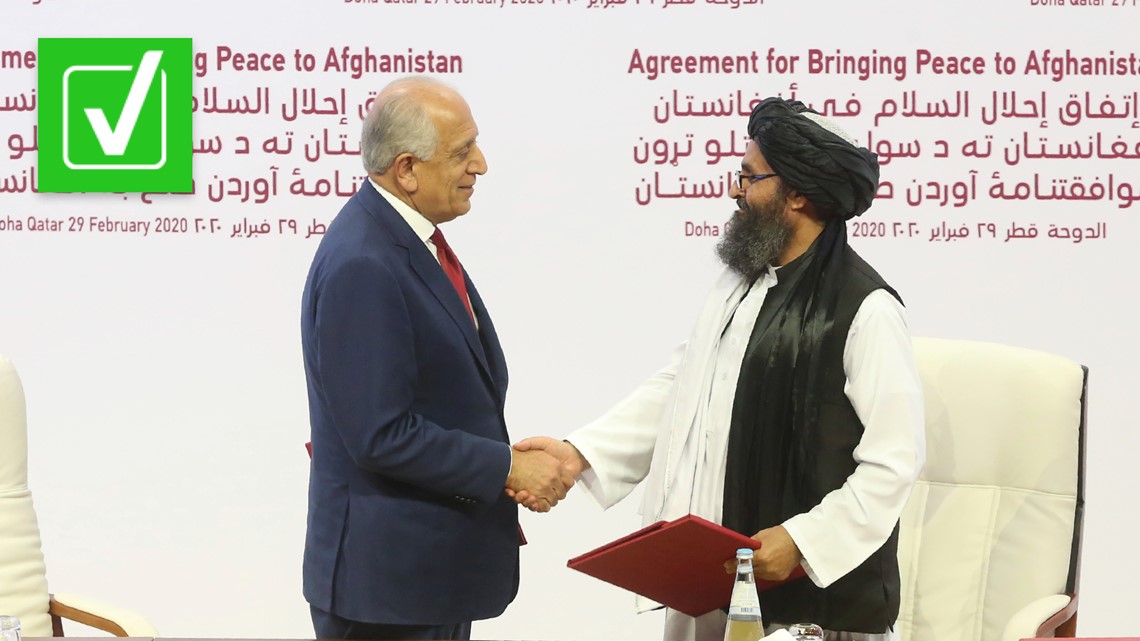That's one reason we like Trump, he's often bluntly honest, and expects performance.
Yet another example of why the machine sees Trump as a threat. Remember the old days when liberals questioned the machine? Those days are long gone, the Democrats far too exposed anyway, so today they're concerned with Woke. Very concerned, and consumed by it. "Please save us democracks, we're racist, so conservatives must be trained".
Trump surprised the generals.
1
U.S. Withdrawal from Afghanistan
This document outlines the key decisions and challenges surrounding the U.S.
withdrawal from Afghanistan.
When he came into office, President Biden believed the right thing for the country was
to end the longest war in American history and bring American troops home. As he laid
out to the American people, after twenty years, the United States had accomplished its
mission in Afghanistan: to remove from the battlefield the terrorists who attacked the
United States on 9/11, including Osama bin Laden, and degrade the terrorist threat to
the United States. Over two decades, the United States had also—along with our
NATO allies and partners—spent hundreds of billions of dollars training and equipping
the Afghan National Defense and Security Forces (ANDSF) and supporting successive
Afghan governments. At the outset, America’s goal was never to nation-build. But,
over time, this is what America drifted into doing. Two decades after the war had
started, America had become bogged down in a war in Afghanistan with unclear
objectives and no end in sight and was underinvesting in today’s and tomorrow’s
national security challenges.
President Biden’s choices for how to execute a withdrawal from Afghanistan were
severely constrained by conditions created by his predecessor. When President Trump
took office in 2017, there were more than 10,000 troops in Afghanistan. Eighteen
months later, after introducing more than 3,000 additional troops just to maintain the
stalemate, President Trump ordered direct talks with the Taliban without consulting with
our allies and partners or allowing the Afghan government at the negotiating table. In
September 2019, President Trump embolded the Taliban by publicly considering inviting
them to Camp David on the anniversary of 9/11. In February 2020, the United States
and the Taliban reached a deal, known as the Doha Agreement, under which the United
States agreed to withdraw all U.S. forces from Afghanistan by May 2021. In return, the
Taliban agreed to participate in a peace process and refrain from attacking U.S. troops
and threatening Afghanistan’s major cities—but only as long as the United States
remained committed to withdraw by the agreement’s deadline. As part of the deal,
President Trump also pressured the Afghan government to release 5,000 Taliban
fighters from prison, including senior war commanders, without securing the release of
the only American hostage known to be held by the Taliban.
Over his last 11 months in office, President Trump ordered a series of drawdowns of
U.S. troops. By June 2020, President Trump reduced U.S. troops in Afghanistan to
8,600. In September 2020, he directed a further draw down to 4,500. A month later,
President Trump tweeted, to the surprise of military advisors, that the remaining U.S.
troops in Afghanistan should be “home by Christmas!” On September 28, 2021,
Chairman of the Joint Chiefs of Staff Milley testified that, on November 11, he had
received an unclassified signed order directing the U.S. military to withdraw all forces
from Afghanistan no later than January 15, 2021. One week later, that order was
rescinded and replaced with one to draw down to 2,500 troops by the same date.
During the transition from the Trump Administration to the Biden Administration, the

